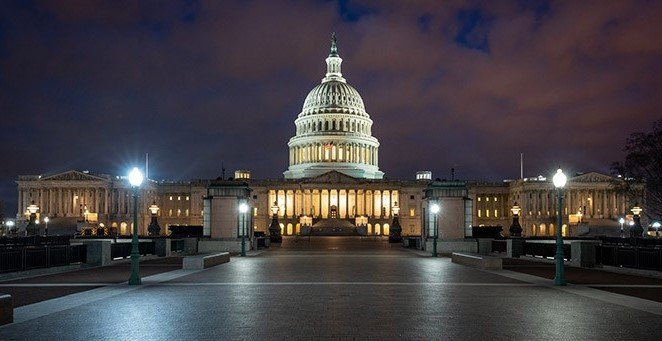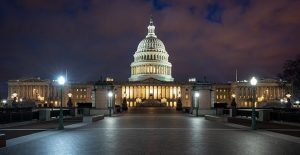The Four Secrets to Motivating Students
Larry Ferlazzo is an English and social studies teacher at Luther Burbank High School in Sacramento, Calif.
Supporting student engagement and creating the conditions in which student intrinsic motivation can flourish continues to be a challenge facing teachers in the classroom.
Today’s post is the latest in a series offering suggestions about what teachers can do to help make it happen.
Diana Laufenberg is a former teacher who currently serves as the executive director of Inquiry Schools, a nonprofit organization focused on supporting schools to become more inquiry-driven and project-based. She currently lives near the family farm where she grew up in rural Wisconsin:
Throughout the last decade, I’ve come to think of the response to this question through the lens of situated motivation that was introduced to me by Zac Chase. From Paris and Turner in 1994 in the chapter on Situated Motivation, “analyses of motivation should consider the characteristics of individuals in specific situations because a person’s motivational beliefs and behavior are derived from contextual transactions.” They went on to identify four ways that the conditions of learning can create more motivation for learning: Choice, Challenge, Control, and Collaboration. I’ll offer up some thoughts on the practical applications for each of these conditions for learning.
Choice
Providing choice is a go-to strategy for creating situations in which students can be motivated to learn. Choice was a key feature in all my major projects when I was teaching social studies. A middle school example of this was a project I did called The History of Anything, an idea relayed by my former colleague Doug Herman. While his example was for high school, I applied it to the middle school classroom for an end-of-year project. The concept was simple: Create a project that tells the history of anything. Students chose fairy tales, sports, comic characters, manga, video games, technology, etc. There were limits, such as nothing that was “born” after 2000, it needed to be researched on the school filter, and they needed to use primary-source documents in their storytelling. The effect of this choice was palpable—some students were a little overwhelmed with the broad nature of the provocation, some were immediately keyed in on their topic, and others vacillated between a couple of options. The result was a buzz of 7th graders all learning *about* different things while demonstrating a similar set of skills related to historical research, communication, and presentation. There were 125 of them; they all completed the project. Choice matters.
Challenge
The Goldilocks zone is the best way I know how to describe this feature of providing the conditions for motivation to occur in a classroom. Not too hard, not too easy … just right. This is also known educationally as the zone of proximal development. Providing students a task that they know they can do with little effort is not motivating nor is the task that they know is out of their range. Finding that sweet spot of challenge is, well, challenging. (Which is why it was such a motivating factor for me as a teacher to solve.) The best example I can offer for this condition for learning is to think about each project that you work on with students as a way to reach slightly beyond what they are comfortable doing.
For instance, you take a project like What If? History, a project that slightly scared me every time I jumped into it with the students for its breadth, depth, and complexity. The key here wasn’t just that the project was challenging, it was that I created space to support students when they ran up against something that felt just beyond their capacity. They knew I was there with questions, suggestions, examples to help them through the tough spots. You can challenge students, but it can be wildly unmotivating when they do not also have adequate support in meeting that challenge. Structure units or projects that stretch students past their comfort zone, making sure to closely follow with help and encouragement.
Collaboration
Humans are social creatures. The idea of learning alone has its place, but opportunities to learn with others have an incredible motivating impact as well. Sharing ideas often sparks more ideas. Hearing from students that have a different life experience or knowledge base can enlighten others. Connecting with others around common learning concepts helps students understand where they are in the landscape of understanding. Reminder, collaboration isn’t just group projects. Turn and talk, speed (dating) learning, feedback protocols, academic puzzles, collaborative problem-solving are a fraction of the valid ways collaboration can be incorporated into a classroom to motivate learners.
Control
This is the most difficult of the four to address in the classroom. Balancing the need to provide a productive work environment while allowing some student control is challenging. Think about all the ways that you control or inhibit student ideas or movement and consider which of those might shift to more student control. Spaces where students feel more autonomy are spaces where they will exhibit more motivation for learning. One of the easiest ways to consider a concrete shift in your classroom is to consider a prepositional shift from doing things to and for students … into more that is by and with students. Think of it as the coffee shop effect—many adults work very well in a coffee shop, better than at the office or their desk. Controlling your space can have a direct effect on motivation.
providingchoice
Choice
Mary K. Tedrow taught in the high school English classroom beginning in 1978. She currently teaches and directs the Shenandoah Valley Writing Project at Shenandoah University in Winchester Va. Tedrow is also a lecturer at Johns Hopkins University and the author of Write, Think, Learn: Tapping the Power of Daily Student Writing Across Content Areas:
My absolute top strategy for motivating students—even the most reluctant—is to include an element of choice wherever possible. I’ve seen choice spur on students of every stripe. When seniors in a noncollege-bound English classroom were given wide latitude in their options for a senior capstone project, all of them were able to locate topics that embraced their current lives, interests, and concerns. And the results were fascinating. One year, we all learned about one student’s connection to the dirt racetrack in town when he researched its history. He even brought his race car to school. We glimpsed a side of this student that was not validated with traditional school sports.
To employ choice, it might seem teachers only need to say, “You can study anything.” But that by itself is not at all motivating. In fact, when the doors are flung open to many possibilities, most students stand frozen in the doorway, unable to locate an interest or select from a limitless landscape.
Teachers who offer choice must be adept in facilitating choice making. A favorite prompt to get students started is, “What are you worried about?” After students list their worries, we begin sharing as a class. The larger list goes up at the front of the room, and harvesting ideas from others and further thinking are encouraged. Researching a worry gives students a handle on controlling major issues in their lives. You’d be surprised how many students are worried about their life post-high school. Others have researched diseases or disabilities that touch their families.
Another powerful way to develop topics is to ask students to list their daily schedule. Model your own and demonstrate areas where you have further questions about the activities.

Lists generated around questions are great tools for choice. Develop a prompt, have students list, and then ask them to choose the one that excites the most interest. If kept in a journal, the lists remain available for later options when students are stuck for ideas.
If you are teaching a process—like research—instruction and support is centered on how to complete the process rather than what to select. Think about processes that are a part of your discipline and make that the instructional focus with student choice as the motivator.
Another final motivating factor in choice is that it includes some goal setting. Everyone works harder when they set their own goals. Add a reflective writing at the end, and both you and the student will know what was learned along the way,
Valerie King is an educator who champions relevancy for her young learners to promote their awareness that they can have world-changing agency. Valerie’s first book, Make it Relevant: Strategies to Nurture, Develop and Inspire Young Learners, was published in February 2022:
Teachers must come from a place of relevance when creating the best classroom conditions for students to be self-motivated. It is not just lip-service to say, “Being relevant matters.” While what is relevant to our learners may change, teachers can ensure there is a connectedness between content and what is important to learners’ lives in order that learners discover a sense of belonging, establish a belief in themselves, and ultimately become who they are meant to be. Ensuring our intent is to nurture, develop, and inspire learners, we are best postured to engage even the most reluctant learners.
Create a sense of belonging in the classroom. Classrooms need teachers who lean in to form an absolute understanding of learners, especially those that need a more implicit lens from which to be seen. Learners must be exposed to an engaging classroom environment supported by an inclusive culture that embraces individuality. Consider a daily morning meeting. First established by Northeast Foundation for Children staff as part of the Responsive Classroom approach to teaching and learning (Kriete & Bechtel, 2002, p. 4), a morning meeting is an inclusive experience that focuses on every learner having the opportunity to belong. Simply dedicating a few minutes every morning to greet, share, and relate to your learners allows for learners to create the mood of the classroom.
Establish strong relationships. Teachers know it is important to engage and inspire learners where relationships are the spark. However, equally important is the interdependence that classrooms can foster. Inviting learners to build relationships with peers provokes social-emotional confidence. Based on the notion of soft starts, a nonthreatening ease into the learning day, Learning Huddles allow play, creativity, and innovation to be disguised as learning—both affective and cognitive.
Intentional planning of low-prep, high-engagement tasks with the goal of collaboration encourages even the most hesitant learners. Build interdependence by relying on the experts in the classroom, the learners. Create an expert wall where learners express their strengths and become the expert in an area to support peers. From organization to cognitive tasks to classroom management, the most reserved learner will thrive as a self-identified expert and believe in his or her abilities even more so.
Step back so learners can step forward. From the minute learners hit the classroom threshold, offer choice. Whether choice seating, choice tasks, choice partners, choice text, or product choice, start with offering alternatives so learners establish a sense of ownership. Learners are capable of so much more than teachers believe. Teachers know the best learning is messy and chaotic: cue learners trying anything for the first time. However, too often, teachers lend a hand and step in when learners can do “it” for themselves. A comfortable, safe struggle is necessary for true learning to happen. Consider that every time teachers do things that learners can do for themselves, we are sending a message that says, “I can do this better than you can.” Or worse, “I don’t believe you can do this at all.” Letting learners do for themselves affords them the opportunity to become who they are meant to be within and beyond a classroom.
Teaching is equal parts challenge, laughter, reflection, and action. There are so many facets of being a teacher, and dissecting what matters most is sometimes our greatest hurdle. This is especially true when we are looking for the magic elixir to build self-motivated learners and nudge the more unenthusiastic of them. I know this for sure: When teachers come from a relevant place where the tenets of belonging, believing, and becoming are paramount, learners will be willing and eager to engage.
Thanks to Diana, Mary, and Valerie for contributing their thoughts today.
This is the third post in a multipart series. You can see Part One here and Part Two here.
What strategies have you used to create classroom conditions where students were more likely to motivate themselves, including those who didn’t initially seem very engaged?
Chandra Shaw, Irina McGrath, Meg Riordan, and Andrew Sharos kicked off this series.
Chandra, Irina, Meg, and Andrew were also guests on my 10-minute BAM! Radio Show. You can also find a list of, and links to, previous shows here.
Education Week has published a collection of posts from this blog, along with new material, in an e-book form. It’s titled Classroom Management Q&As: Expert Strategies for Teaching.
Just a reminder; you can subscribe and receive updates from this blog via email (The RSS feed for this blog, and for all EdWeek articles, has been changed by the new redesign—new ones are not yet available). And if you missed any of the highlights from the first 11 years of this blog, you can see a categorized list below.





















